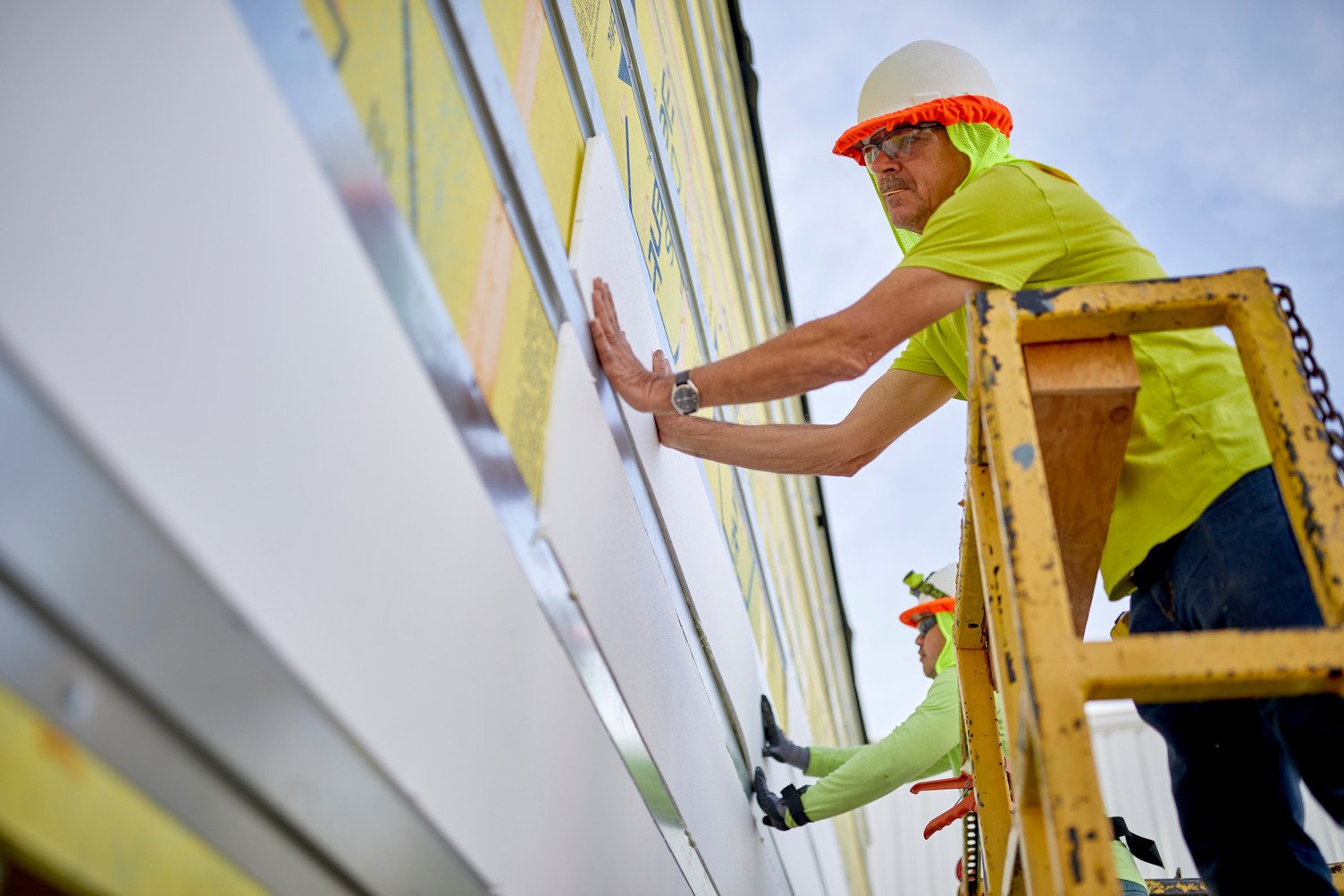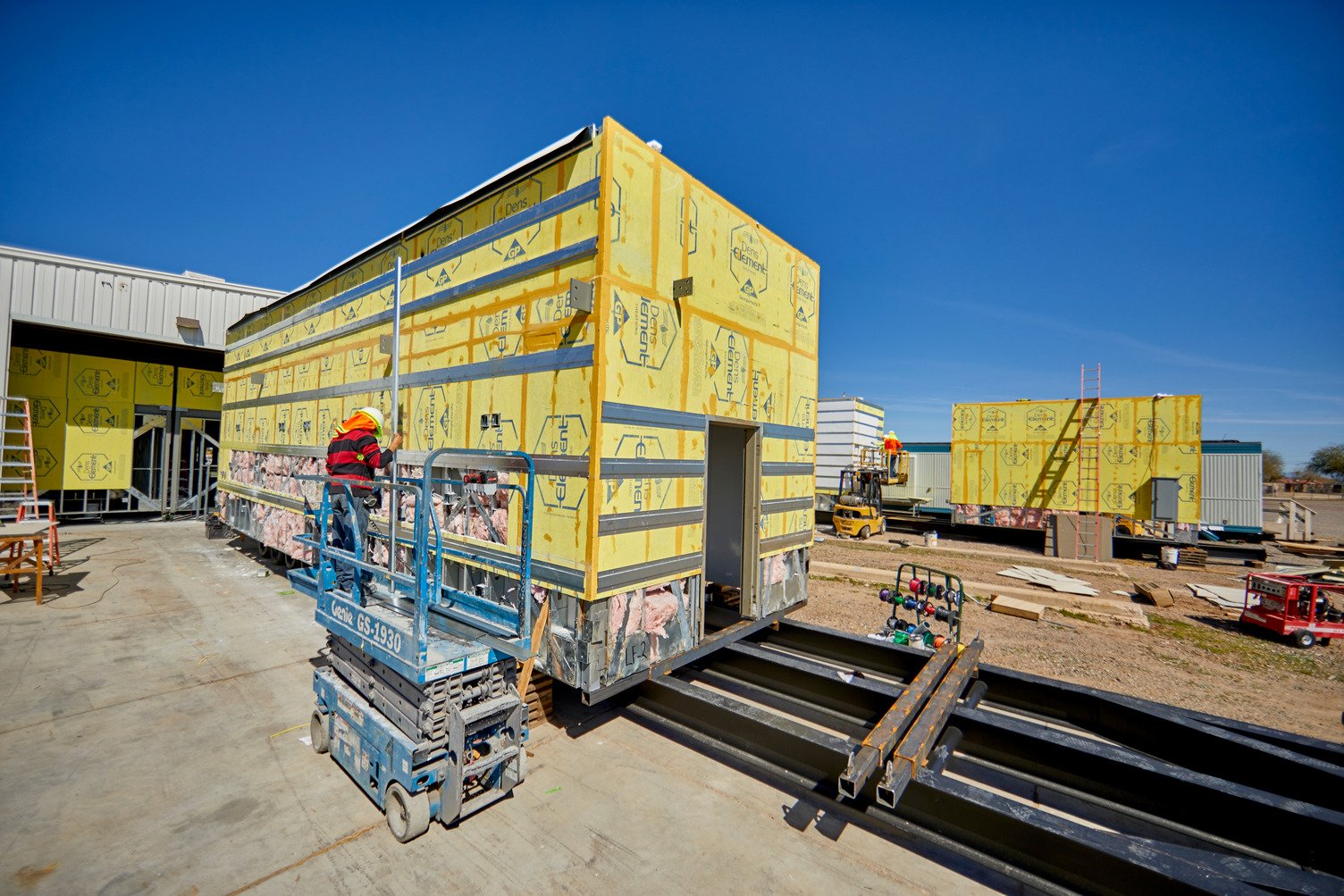A Welcome Disruption: How Prefab Construction Savings Could Transform the Industry

Prefab, or offsite, construction is positioned to disrupt the industry, and new research by McKinsey & Company offers compelling evidence.[1] Prefab could claim $130 billion of the market by 2030 in the United States and Europe at moderate penetration, delivering an annual cost savings of $22 billion. This, combined with other strategies, would help fill a $1.6 trillion productivity gap identified in 2017. That’s enough to fund roughly half the world’s infrastructure spending.
For decades, construction has lagged other sectors in productivity performance,” the report states. “Now there is an opportunity for a step change: shifting many aspects of building activity away from traditional onsite projects to offsite manufacturing-style production.
Markets face a crossroads
Modular construction experienced post-war booms in the United States in the 1940s and 1950s. Prefabricated construction has fallen in and out of favor in the United States since then. “Yet there is reason to believe the current revival could be different,” the report states. “The industry is adopting new materials as well as digital technologies that enhance design capabilities and variability, improve precision and productivity in manufacturing, and facilitate logistics.”
This potential shift comes at a time when both the construction industry and the real estate market are facing a crossroads. Construction employees ages 45 years and older increased to 50% from 32% between 1985 and 2010, creating a labor shortage that has strained the industry. Meanwhile, nearly two-thirds of renters nationwide say they can’t afford to buy a home.[2] Home prices are rising at twice the rate of wage growth.[3] California alone needs to build 3.5 million units by 2025 to close its housing gap, according to previous McKinsey research. Manufacturing offers a potential solution to both challenges.
The benefits of prefabricated construction include:
- Reduced construction costs and the overall lifetime cost of the building.
- Accelerated construction schedules.
- Greater certainty on construction times and costs.
- Improved quality of the building, including better energy or seismic performance.

Solutions to labor, housing shortages
Prefabricated construction offers significant overall savings and efficiencies, specifically with regard to labor and materials. These are significant considerations in a time when construction services are becoming more expensive and harder to secure – potentially compromising quality and making projects take longer to complete.
There are several compelling factors:
- Prefabrication can speed construction by as much as 50%.
- Given the appropriate environment and tradeoffs, prefab can cut construction costs by 20%.
- In a modular build, up to 80% of traditional labor activity can take place at an offsite manufacturing facility. That means lower-cost workers can take on some of the most skill-intensive and expensive types of work – including mechanical, electrical and plumbing – and ultimately reduce the wage bill.
“More importantly, the more standardized, automated and controlled operating environment of a factory can double productivity above what can be achieved with traditional builds, eliminating a great deal of onsite down time,” the report states. “This is even before considering the productivity benefits of establishing simplified, repetitive processes or advanced automation equipment.”
- Predictions indicate that transitioning to offsite manufacturing will reduce labor costs on a project by up to 25%. Savings are even greater when more high-value activities such as electrical, plumbing and HVAC take place offsite. One manufacturer estimates that 25% of time onsite is spent creating value, while 75% of time spent offsite creates value.
Along with digitization, the opportunities prefab presents could push the construction industry out of its comfort zone and its long-standing pattern of slow change – hailing a new era for modern building.
[1] “Modular construction: From projects to products,” McKinsey & Company, June 2019 https://www.mckinsey.com/industries/capital-projects-and-infrastructure/our-insights/modular-construction-from-projects-to-products
[2] https://www.wsj.com/articles/more-renters-give-up-on-buying-a-home-1522773685
[3] https://www.housingwire.com/articles/47878-home-prices-are-rising-faster-than-wages-in-80-of-us-markets
This article is intended solely as general information. Ultimately, the design and detailing of any project, assembly or system is the responsibility of a professional, and all projects must comply with applicable building codes and standards. For information concerning the limited warranty for the DensElement® Barrier System page. GP Gypsum disclaims any responsibility or liability for the architecture, design, engineering or workmanship of any project, assembly or system.